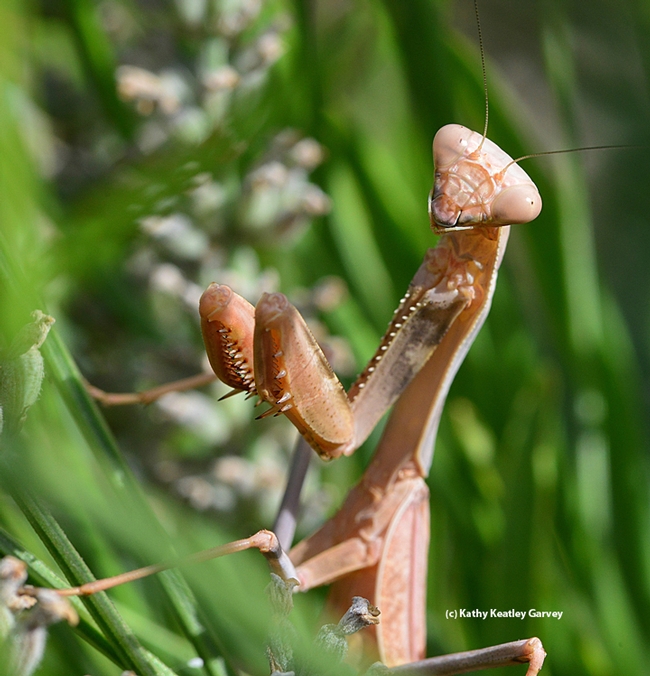The severe California drought--we're in the fourth year--is affecting us all, but it's also affecting insects, says Lynn Kimsey, director of the Bohart Museum of Entomology and professor of entomology at the University of California, Davis.
She writes about "Insects and Drought" in the current edition of the Bohart Museum Society newsletter.
"Californians tend to focus on their lawns and the price of water, but the state's wildlands and animals are also affected," she points out.
Here are some of her observations:
- Drought-stressed trees, such as conifers, "are vulnerable to attack by bark beetles. "The trees are unable to effectively defend themselveswith resin because their oleoresin system is 'powered' by their water-filled vascular system."
- Due to the mild winter (lack of cold temperatures and rain), "houseflies began breeding much earlier, giving their populations an early start" to build up their numbers.
- Due to the drought, wildlife such as skunks, possums, deer, raccoons and turkeys are heading into surburban areas, and bringing their fleas and other parasites. "This is one of the reasons why it's a good idea to keep wildlife away from your home," Kimsey points out.
- Praying mantids emerged earlier than usual this year, and in some areas, are having difficulty finding food. Many immature baby mantids in the foothills starved to death.
- Walnut twig beetles, which in conjunction with a fungus causes thousand cankers disease on native black walnuts, seem to be thriving....the trees "are dying at an accelerated rate due to a combination of water stress and the disease."
So, with the changing weather patterns come the changing insect populations. "Once the rains return, these patterns will change yet again, and again each insect group will react differently," Kimsey said. "Increasing rain, with mild winter temperatures, will have a different effect on insects than more rain and cold temperatures."
Bottom line: "Every year is a new entomological adventure," Kimsey points out. "The more we learn, the less we seem to know about these creatures."
Want to join the Bohart Museum Society and receive the newsletter? And receive other benefits? Check out the society information on the website.
The Bohart Museum, home of nearly eight million insect specimens, is located in Room 1124 of the Academic Surge Building on Crocker Lane, UC Davis. It's open to the public Monday through Thursday (except from noon to 1 p.m.). It's also open on special weekend open houses. For general information, identification of insects, or to schedule a group tour, call the main number at (530) 752-0493. The main email is bmuseum[at]ucdavis.edu. The public education/outreach coordinator is Tabatha Yang (tabyang@ucdavis.edu)
Attached Images:
